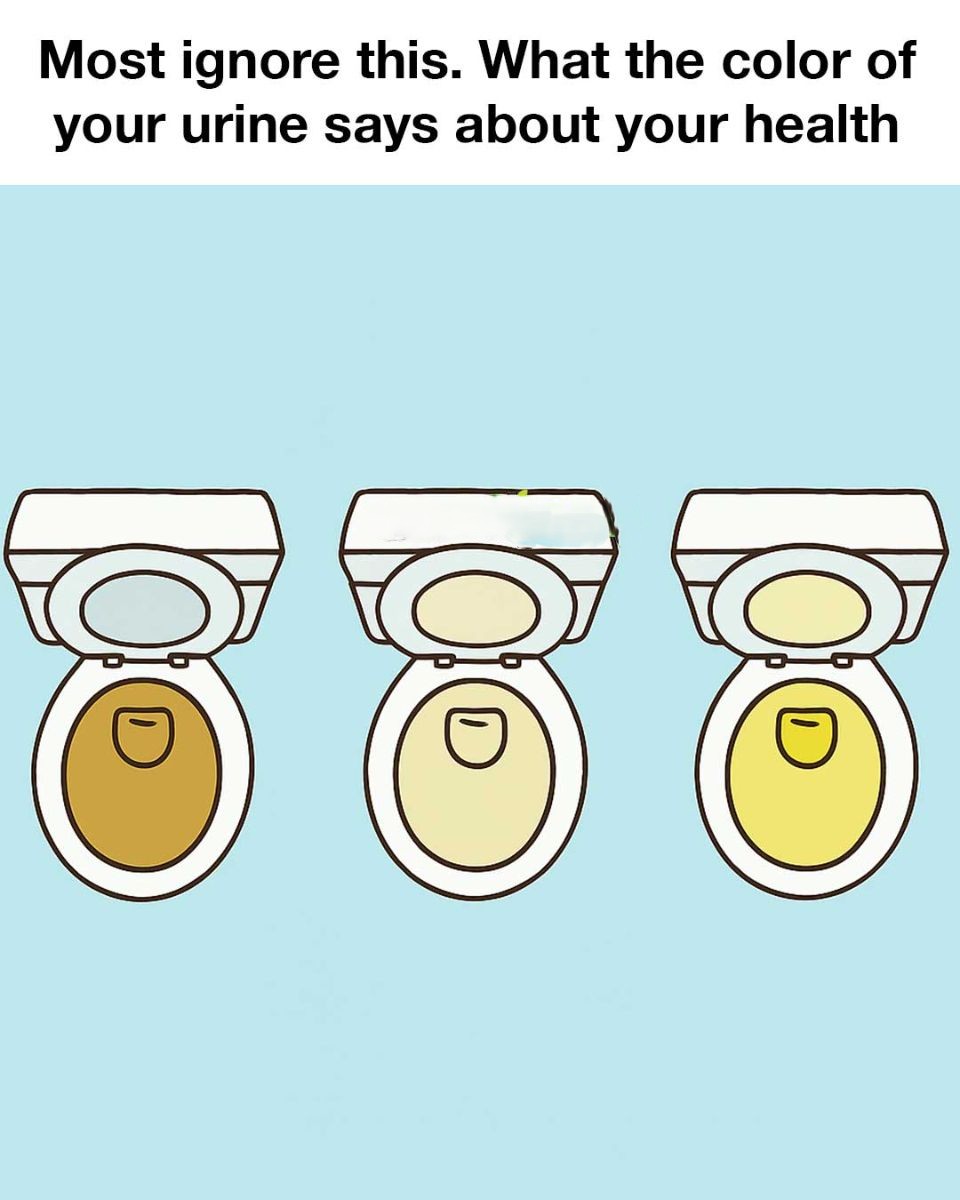ADVERTISEMENT
Urine is a vital indicator of our overall health, often providing clues about our body’s hydration status, dietary habits, and potential medical conditions. The color of urine can vary significantly, ranging from clear to dark amber, and each shade can offer insights into different aspects of health. Understanding what these colors mean can help individuals monitor their health more effectively and seek medical advice when necessary.
Understanding the Basics of Urine Composition
Urine is primarily composed of water, accounting for about 95% of its content, with the remaining 5% consisting of urea, creatinine, electrolytes, and other waste products. These components are filtered out of the blood by the kidneys and excreted from the body. The concentration and composition of these substances can influence the color of urine, making it a useful diagnostic tool for healthcare professionals.
The Significance of Urine Color in Medical Diagnosis
Urine color is a quick and non-invasive indicator that can reveal a lot about a person’s health. Changes in urine color can signal dehydration, liver problems, urinary tract infections, and other medical conditions. By observing urine color, individuals and healthcare providers can detect potential health issues early and take appropriate action.
Common Urine Colors and Their Meanings
Urine color can range from clear to dark brown, with each shade indicating different health conditions. While some colors are harmless and temporary, others may require medical attention. Understanding these variations can help individuals determine when to seek medical advice.
Clear or Transparent Urine: Hydration Levels
Clear urine typically indicates that a person is well-hydrated, possibly even overhydrated. While staying hydrated is essential, consistently clear urine may suggest that one is drinking more water than necessary, which can dilute essential electrolytes in the body.
Pale Yellow Urine: Optimal Health Indicators
Pale yellow urine is often considered a sign of optimal hydration and health. This color results from the presence of a pigment called urochrome, which is diluted in well-hydrated individuals. It indicates that the kidneys are functioning properly and that the body is well-balanced in terms of fluid intake.
Dark Yellow or Amber Urine: Signs of Dehydration
Dark yellow or amber urine is usually a sign of dehydration. When the body lacks sufficient water, urine becomes more concentrated with waste products, resulting in a darker color. Increasing water intake can help restore normal urine color and prevent dehydration-related health issues.
Orange Urine: Possible Causes and Health Implications
Orange urine can be caused by several factors, including dehydration, certain medications, and dietary choices. It may also indicate liver or bile duct problems if accompanied by other symptoms like jaundice. Consulting a healthcare professional is advisable if orange urine persists.
Red or Pink Urine: When to Seek Medical Advice
Red or pink urine can be alarming and may result from the presence of blood, a condition known as hematuria. It can be caused by urinary tract infections, kidney stones, or more severe conditions like tumors. Immediate medical evaluation is recommended to determine the underlying cause.
Blue or Green Urine: Rare Causes and Conditions
Blue or green urine is rare and often linked to certain medications, dyes used in medical tests, or bacterial infections. While it is usually harmless, persistent changes in urine color to blue or green should be evaluated by a healthcare provider to rule out any underlying conditions.
Brown or Tea-Colored Urine: Potential Health Concerns
Brown or tea-colored urine can indicate severe dehydration or liver conditions such as hepatitis or cirrhosis. It may also result from the breakdown of muscle tissue, a condition known as rhabdomyolysis. Medical consultation is necessary to determine the cause and appropriate treatment.
Cloudy or Murky Urine: Indicators of Infection
Cloudy or murky urine can be a sign of a urinary tract infection (UTI) or the presence of excess proteins, blood, or pus. It may also result from kidney stones or other renal issues. A healthcare professional can perform tests to diagnose the cause and recommend treatment.
Foamy or Bubbly Urine: Possible Underlying Issues
Foamy or bubbly urine can occur occasionally due to rapid urination, but persistent foaminess may indicate the presence of protein in the urine, a condition known as proteinuria. This can be a sign of kidney disease and warrants further investigation by a healthcare provider.
Factors Influencing Urine Color Changes
Several factors can influence urine color, including hydration levels, diet, medications, and underlying health conditions. Understanding these factors can help individuals make informed decisions about their health and when to seek medical advice.
Medications and Supplements Affecting Urine Color
Certain medications and supplements can alter urine color. For example, rifampin and phenazopyridine can turn urine orange, while some multivitamins may cause bright yellow urine. It’s important to be aware of these potential side effects and discuss them with a healthcare provider if concerned.
Dietary Influences on Urine Appearance
see continuation on next page
ADVERTISEMENT
